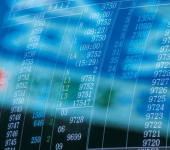Trading at Light Speed: Analyzing Low Latency Market Data Infrastructure
Trading is hard. Profiting from trading is much harder. It takes skill and better, faster technology to do the latter. Today’s markets operate at speeds that are quantitatively driven and computer powered. Humans are increasingly playing the role of the pilot in professional trading operations, relying on the auto-pilot functionality much of the time. These technology-assisted traders take the controls only in unique situations or when things go drastically wrong. In 2006, a full 53% of institutional equities trades in the US were executed through DMA, algorithms, programs, or crossing networks. With steady growth in all electronic execution channels, by 2008 that percentage will be 64%.
Going forward, the multiple components in the high speed trading value chain will only become more critical to trading success. That means these technologies must get better and faster! Firms must understand where data acceleration technologies such as direct market data feeds, event stream processors, and low latency messaging busses fit into their architectures. Firms must be able to design data storage and caching systems to make data available where and when it is needed as quickly as possible. Firms need to better manage the physical network that underpins the connectivity between the multiple components of their trading systems. They must understand the tradeoffs between hardware and software and determine where to move processes and logic onto the wire, into chips, and into the stream to achieve the fastest trading systems possible.
The trading world is not a generous one. The first person to market and execute doesn’t leave behind opportunities. Because speed determines the winners and losers, there will continue to be heavy investment in these trading technologies. The firms capable of making the right investment and managing it through their infrastructure will be capable of trading at virtually light speed and gaining a critical edge in their trading process. Those that are not will certainly be left reading the ticker tape of time, lost in the dust of trading technology gone by.
TABB Group Report “Trading at Light Speed: Analyzing Low Latency Market Data Infrastructure”
This TABB Group Vision Note evaluates today’s high-speed trading infrastructure value chain. The note examines the drivers that are behind the need for faster trading environments. It looks at the effect of automated trading on volatility and the expected effects on the market structure as we move through market shifts like Regulation NMS and penny options. Further, the report dissects the high speed trading value chain looking at areas ranging from physical connectivity and message distribution busses, to ticker plants, feed handlers, aggregated and direct market data feeds, to time series analysis and event stream processing engines. Each of these segments is looked at with an eye to its latency and throughput challenges and the value that vendors in the segment are bringing to the trading process. Finally, the report looks at where high speed low-latency infrastructure trading is headed –where firms are investing in moving toward collocation, putting their software in silicon and how they are further driving latency from the trading process.
Key findings and forecasts include:
p Driven by high speed trading technology, market volatility will continue to decline at a 10.8% compounded annual rate over the next 2 years.
p Spending on advanced trading technology is accelerating across asset classes. US capital market spending on advanced trading technology is expected to total $860 million this year and to reach $1.3 billion by 2010.
p The expense of maintaining high-capacity, low-latency networks – WAN and LAN combined – is the largest area of advanced trading technology spending (25%) and one of the most difficult to manage.
p As the need for speed becomes more critical, the production lifespan of key components is falling rapidly. The average server production lifespan in 2006 was 4.2 years, but will fall to 2.3 by 2010, a -26% CAGR
- FinTech





